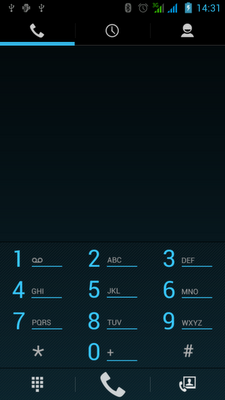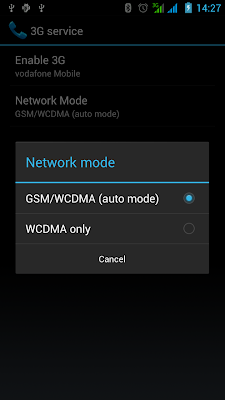Samsung Galaxy Note won the world-shaking success when it first appeared on the market, because most people think that huge screen and S Pen features are great, and these amazing features not only still keep on Galaxy Note 2, but also have been updated and enhanced on Galaxy Note 2, so they believe Galaxy Note 2 is better than Galaxy Note. Maybe that is just the difference for Galaxy Note 2 from Galaxy Note.
Display Differences Between Note 2 and Note
 |
| Difference on Display Between Note 2 and Note |
So if you want to use a phone to watch movie, Galaxy Note 2 is a much better choice from Galaxy Note, Galaxy S3, HTC One X and iPhone, just because of its huge and 19:6 display.
The same thing between them are they both use the HD Supper AMOLED display, and both support the full HD 1080p movie playback.
Differences on CPU, Memory Between Note 2 and Note
Processor and memory differences are just what the things amaze us on Galaxy Note 2, compared to Galaxy Note's 1.5GHz dual core processor , 1GB of RAM and 32GB maximum card size , Galaxy Note 2 is much more better than Galaxy Note, which has 1.6GHz quad core processor, 2GB(dual channel) of RAM and 64GB maximum card size.With this kind of configuration on Galaxy Note 2, we'll be able to do things much more smoothly.
Camera Difference Between Note 2 and Note
Actually, except for the slight difference on front cameras for Galaxy Note 2 and Galaxy Note, there are no differences on camera between Galaxy Note 2 and Galaxy Note, the main camera on both Galaxy Note 2 and Galaxy Note are 8 MP camera, and both support to record 1080p @30fps videos, the front camera on Galaxy Note 2 is 1.9MP camera, but on Galaxy Note is a 2MP camera.S Pen Features Differences Between Note 2 and Note
 |
| Galaxy Note 2 S Pen |
With this new features, our life will become more easy, like when we call, we can use Popup Note with S Pen to note, but not need to find a pen and a piece of paper to write on.
Video Playback Difference Between Note 2 and Note
No matter Galaxy Note or Galaxy Note 2, they are both great for movie playback, as they have huge display, but which one is better? Obviously, Galaxy Note 2 is much more better for watching movies so far, not only due to its big display, but also due to its capability for supportting many more video/movie formats and codecs, on Galaxy Note, we can play MP4, WMV, 3GP, AVI,ASF format video or movie with MPEG4/H.263/H.264/DivX,WMV,VC-1 codecs. But on Galaxy Note 2, as the same as Galaxy Note 10.1, which start to support MKV and FLV movies directly aside from formats like MP4,WMV, 3GP,AVI and ASF , the codecs VP8, except for what Galaxy Note supported is available on Galaxy Note 2.So , among smartphones, Samsung Galaxy Note 2 is become the best smartphone for watching movies, I think. As we'll be able to play MKV movies on Galaxy Note 2 directly without converting it to MP4, or save the device's space without installing a media player in it.
Other Difference Between Note 2 and Note
Some other difference on Galaxy Note from Galaxy Note you may find that some new features have added from Samsung Galaxy S3, like S Beam, which means we'll be able to transfer files like movie, video from Galaxy Note 2 to another Galaxy Note 2 or Galaxy S3 with S Beam just near them.At last, we can get to know that the main improvements on Galaxy Note 2 are higher hardwares configuration, the enhanced S Pen features and the transplanted features from Galaxy S3. But they are enough to make Galaxy Note 2 become one the hot smartphone.






















































































